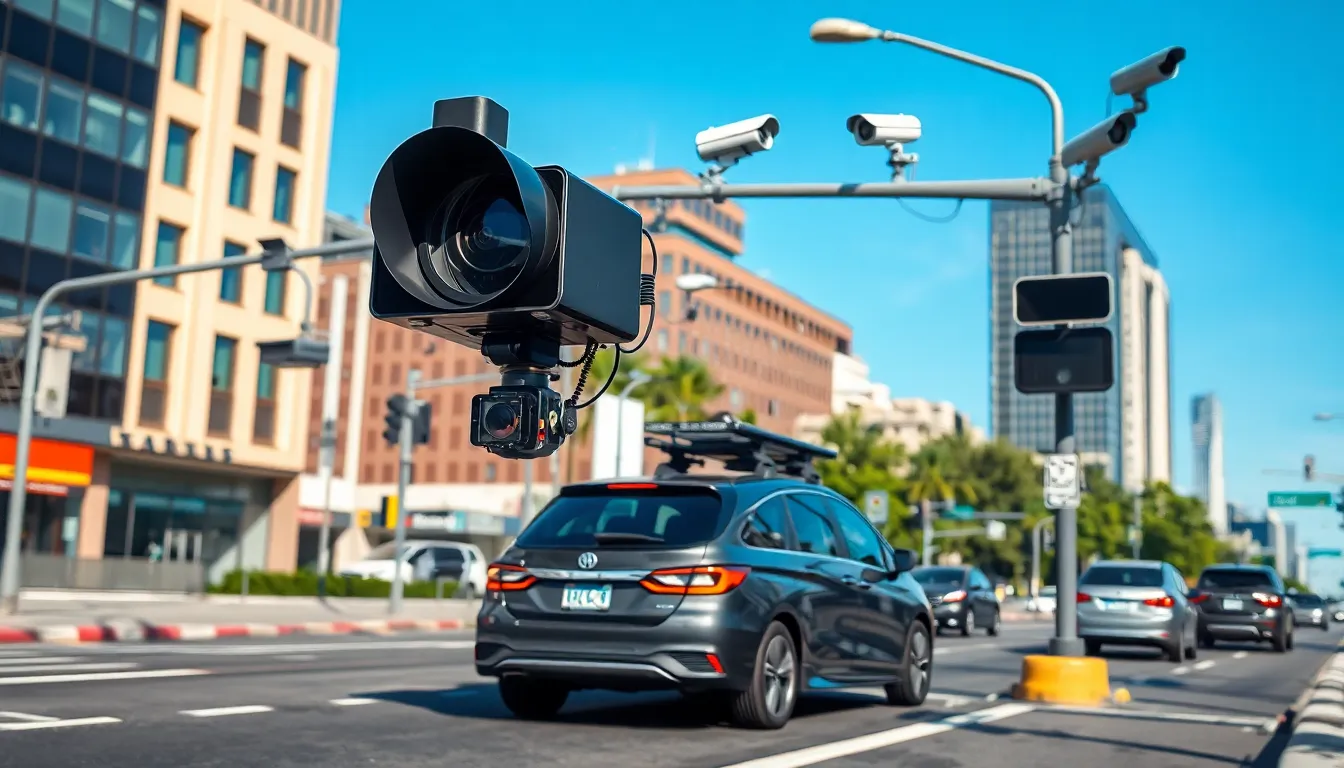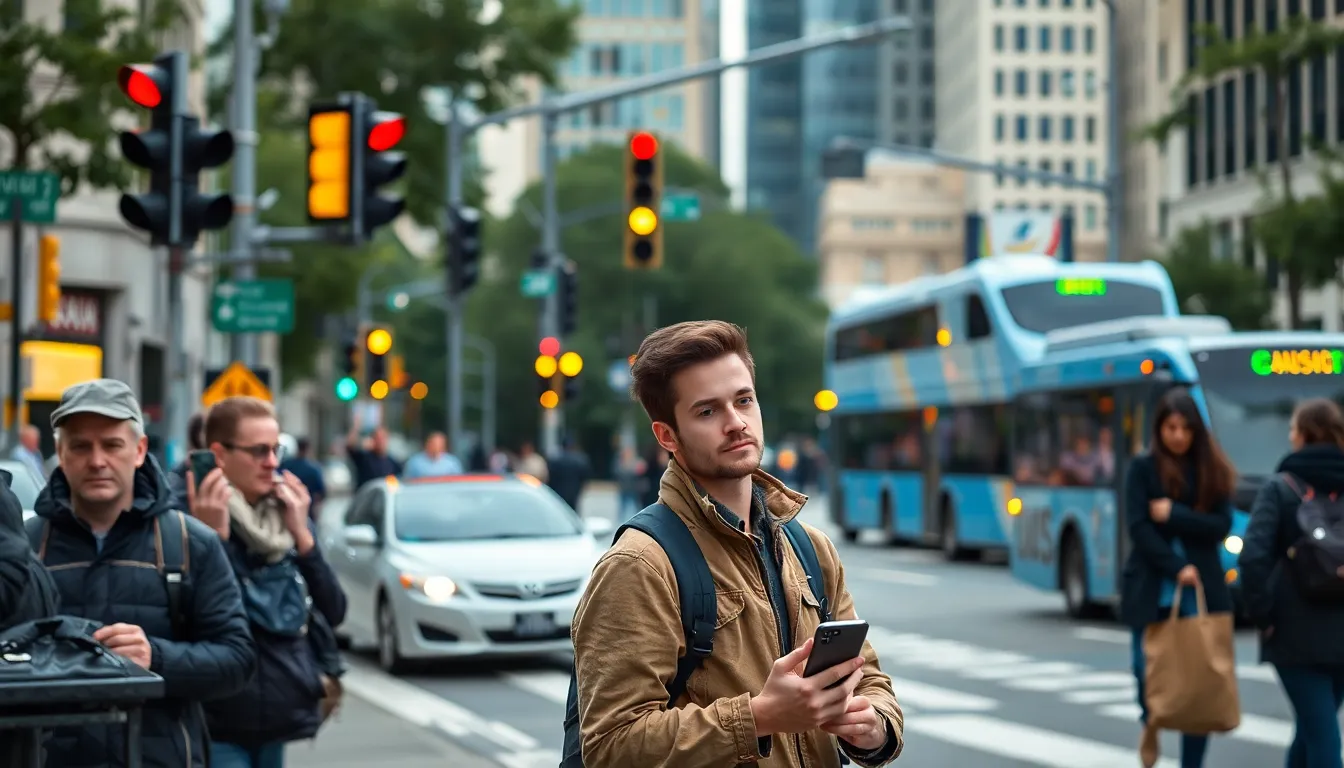In a world where traffic jams feel like a second job, the Internet of Things (IoT) is here to save the day—one smart vehicle at a time. Imagine cars that talk to each other, traffic lights that actually know when to change, and buses that arrive on time (yes, it’s possible!). IoT in transportation isn’t just a futuristic dream; it’s rapidly transforming how people and goods move from point A to point B, and it’s about to make your commute a lot less painful.
With sensors, connectivity, and data analytics, transportation is becoming more efficient, safer, and even a bit more fun. From reducing congestion to enhancing safety measures, IoT is revolutionizing the way we navigate our roads. Buckle up as we dive into how this technology is reshaping the transportation landscape and making our journeys smoother and smarter.
Table of Contents
ToggleOverview of IoT in Transportation
IoT significantly enhances transportation systems through interconnected devices and data-driven insights. Smart vehicles equipped with sensors gather real-time data on traffic conditions, vehicle performance, and driver behavior. This information allows for optimized routing, reducing travel times and fuel consumption.
Connected traffic lights use data analytics to adapt to real-time traffic patterns. With these adjustments, traffic congestion decreases, leading to smoother commutes. Public transportation systems leverage IoT technology to provide accurate arrival times and route information. Passengers enjoy access to real-time updates, improving their overall travel experience.
Another crucial component involves the integration of IoT in fleet management. Companies utilize tracking software to monitor vehicle locations and maintenance schedules. This management ensures that fleets stay operational and respond quickly to changing demands.
Safety remains a top priority within IoT applications. Sensors can detect hazards on the road, providing immediate alerts to drivers. This technology contributes to accident prevention and enhances overall road safety.
Data security is also a significant focus in IoT. With increased connectivity comes the risk of cyber threats. Implementing robust security measures protects sensitive information and maintains user trust.
Collaboration among city planners, technology developers, and transportation agencies fosters innovation. By sharing data and insights, stakeholders generate solutions that address specific transportation challenges. Collective efforts lead to the development of smarter urban environments.
These advancements indicate a future where transportation is more efficient, safer, and user-friendly. The ongoing evolution of IoT in transportation promises to redefine how individuals and goods move in urban spaces.
Key Technologies Involved

IoT in transportation relies on several key technologies that enhance connectivity and efficiency. These technologies drive innovation and improve the overall experience for users.
Sensors and Devices
Sensors play a vital role in gathering data across transportation networks. Smart vehicles utilize sensors to monitor speed, location, and environmental conditions. Traffic cameras contribute to real-time insights on congestion levels, while GPS devices track public transport movements. Devices like mobile applications provide users with up-to-date information on arrivals and delays. Wearable technology offers additional data points by monitoring health metrics of drivers. Collectively, these sensors and devices foster a more responsive and efficient transportation system.
Communication Protocols
Communication protocols enable seamless data exchange among IoT devices. Various protocols like MQTT, CoAP, and HTTP serve specific requirements for low latency and high reliability. Short-range technologies such as Bluetooth and Zigbee facilitate communication between connected devices within vehicles. Cellular networks provide extensive coverage for real-time data transmission in larger areas. Vehicle-to-everything (V2X) communications allow vehicles to interact with infrastructure, enhancing safety and supporting traffic management. These protocols form the backbone of IoT solutions in transportation, ensuring devices work cohesively.
Benefits of IoT in Transportation
The integration of IoT in transportation delivers multiple advantages, from increased efficiency to enhanced safety measures, and a positive environmental impact.
Enhanced Efficiency
Smart vehicles contribute to efficiency by using real-time data analysis to optimize routes. Traffic flow improves as connected traffic lights adjust according to live conditions, minimizing delays. Public transport systems leverage IoT by providing accurate arrival predictions, which enhance passenger satisfaction. Fleet management software tracks vehicle locations and maintenance needs, promoting operational effectiveness. With these advancements in technology, daily commuting becomes more predictable and manageable.
Improved Safety
Safety in transportation sees significant improvements through IoT technologies. Sensors in vehicles detect potential hazards, alerting drivers in real-time to prevent accidents. Connected infrastructure enables vehicle-to-everything communication, increasing situational awareness on the roads. Data analytics can identify patterns in road incidents, leading to proactive measures for hazard management. These developments foster a safer travel environment for all users, including pedestrians and cyclists.
Environmental Impact
The environmental impact of IoT in transportation is profound. Optimized routing reduces fuel consumption, leading to fewer emissions. IoT systems monitor traffic congestion, helping to alleviate stop-and-go scenarios that contribute to air pollution. Furthermore, connected vehicles can promote shared mobility solutions, decreasing the number of cars on the road. These measures collectively support efforts to create more sustainable urban transportation networks while contributing to climate goals.
Challenges and Limitations
IoT in transportation faces several challenges that impact its effectiveness and user adoption. Security and privacy concerns pose significant obstacles, as increased connectivity may expose sensitive data to potential cyber threats.
Security and Privacy Concerns
Sensitive information about users, including travel patterns and personal data, is at risk. Cyberattacks on transportation networks can disrupt services, leading to safety issues and financial losses. Protecting data requires robust cybersecurity measures and encryption protocols. Transparency in data handling helps maintain public trust, while adhering to regulations ensures compliance. Innovative security solutions, such as blockchain technology, can enhance data integrity, preventing unauthorized access.
Infrastructure Requirements
Implementing IoT solutions demands substantial infrastructure investments. Upgrading existing transportation networks involves integrating advanced sensors, communication technologies, and data management systems. Cities must prioritize network stability and coverage to support real-time data exchange. Ensuring interoperability among devices also becomes essential for seamless operation. Furthermore, collaboration among stakeholders is crucial for developing suitable infrastructure that meets the needs of connected transportation systems.
Future Trends in IoT for Transportation
The future of IoT in transportation presents exciting developments. Innovations focus on smart urban environments, enhanced data analytics, and user-centered experiences.
Integration with Smart Cities
Integration with smart cities emphasizes cohesive connectivity across urban infrastructures. Transport systems operate synergistically with city services, boosting efficiency. Intelligent traffic management systems control signals in real-time, adapting to traffic flow. Public services communicate vital information to citizens through mobile applications. Smart parking solutions identify available spaces, minimizing congestion. With these advancements, cities cultivate more sustainable, efficient transit environments.
Advancements in AI and Machine Learning
Advancements in AI and machine learning are reshaping transportation through predictive analytics. Algorithms analyze vast amounts of data to forecast traffic patterns, improving route optimization. Autonomous vehicles leverage machine learning for real-time decision-making on the road. These technologies enhance safety by assessing road hazards and adapting to dynamic conditions. Predictive maintenance reduces downtime by anticipating vehicle issues before they escalate. Together, AI and machine learning elevate the overall transportation experience.
The integration of IoT in transportation is paving the way for a smarter and more efficient future. By leveraging real-time data and interconnected devices, it enhances safety and optimizes travel experiences. As cities evolve and adopt these technologies, the potential for improved traffic management and reduced environmental impact becomes increasingly tangible.
Collaboration among stakeholders is essential to address challenges and build the necessary infrastructure. With ongoing advancements in AI and machine learning, the transportation landscape is poised for significant transformation. Ultimately, IoT is not just reshaping how people and goods move; it’s laying the groundwork for sustainable urban mobility that benefits everyone.




